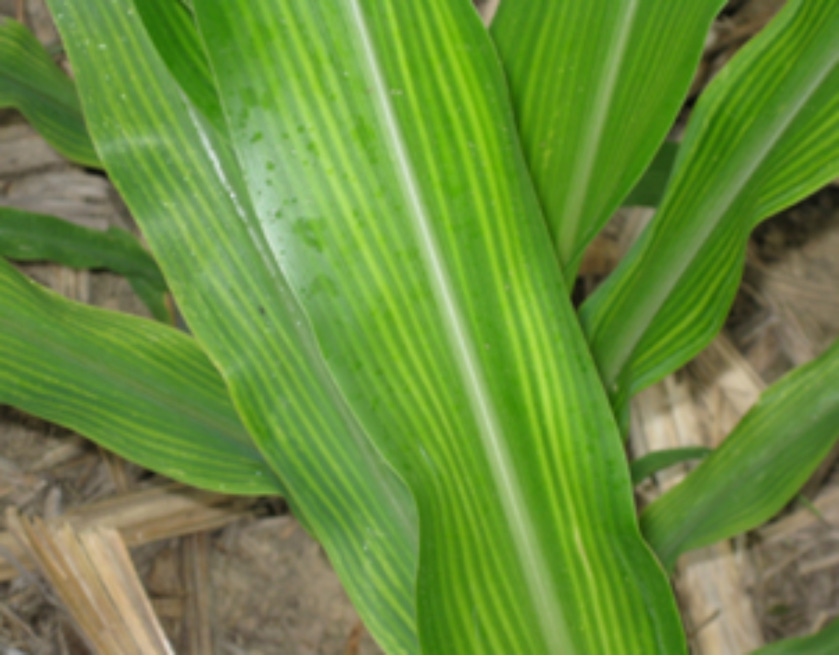July 8, 2016

Yellow striping on corn leaves is more prevalent this year than in the past, possibly because of sulfur deficiency in the soil.
Yellow, green-yellow or yellow-white striping on the leaves of corn plants can indicate a variety of nutrient deficiencies or other damage, said Jim Camberato, a Purdue Extension soil fertility specialist.
Analysis of soil and tissue samples shows that many cases of striping are due to sulfur deficiency.
"We used to get quite a bit of sulfur from rainfall. The power plants would burn coal that had sulfur in it, so sulfur would be deposited in rainfall or absorbed directly from the air by the soil," Camberato said. "But over the last 20-25 years, these emissions have been reduced, so perhaps now the amounts in rainfall and atmosphere deposition are low enough that plants are not getting enough that way anymore."
Wet deposition of sulfur, or sulfur absorbed into the soil from rainfall, decreased by an average of 62 percent in the eastern United States from 1989 to 2013, according to data collected by the U.S. Environmental Protection Agency. The primary source of wet sulfur deposition is through precipitation, known as acid rain.
Weather and temperature play a role in availability of soil sulfur as well. Usable inorganic sulfur is mineralized, or released from organic matter, by microorganisms in warm, moist soil, so if weather is cold and dry, this process will be inhibited.
"This year doesn't fit that mold, but if we experience dry weather later, it could reduce the amount of mineralization that takes place, and it becomes harder for plants to uptake all nutrients," Camberato said. "So it would allow the problem to persist longer and perhaps be more detrimental."
When yellow striping occurs on corn leaves, it is best to send soil and tissue samples to a private lab for nutrient analysis, Camberato said. Samples should be taken from both healthy and affected areas of the field for comparison. In addition to basic testing, Camberato advises farmers to request secondary and micronutrient testing, because striping can also be caused by deficiencies in magnesium, zinc, manganese and iron.
"The entire plant including roots and adhering soil should also be sent to the Purdue Plant and Pest Diagnostic Laboratory to be tested for other causes of yellow striping," Camberato said. "These symptoms could be caused by other conditions such as nematode damage, disease, herbicide damage and compacted or dry soil."
If the condition is confirmed to be due to sulfur or other nutrient deficiency, the best solution is usually to apply the nutrient directly to the soil, Camberato said. While warm weather can eventually increase sulfur mineralization, or growing roots may encounter sulfur deeper in the soil, neither situation is guaranteed to provide enough sulfur for the plant. In such cases, the longer the delay before fertilizer is applied, the more damage and yield reduction may occur.
"These deficiencies are better taken care of proactively," he said. "If a farmer has striping this year, hopefully they will diagnose the cause and plan next year to utilize fertilizer materials wisely to avoid the problem in the first place. It is less expensive and more effective to take care of it before it occurs than to try to fix it."
This content was originally posted by Purdue University Extension.
You May Also Like




